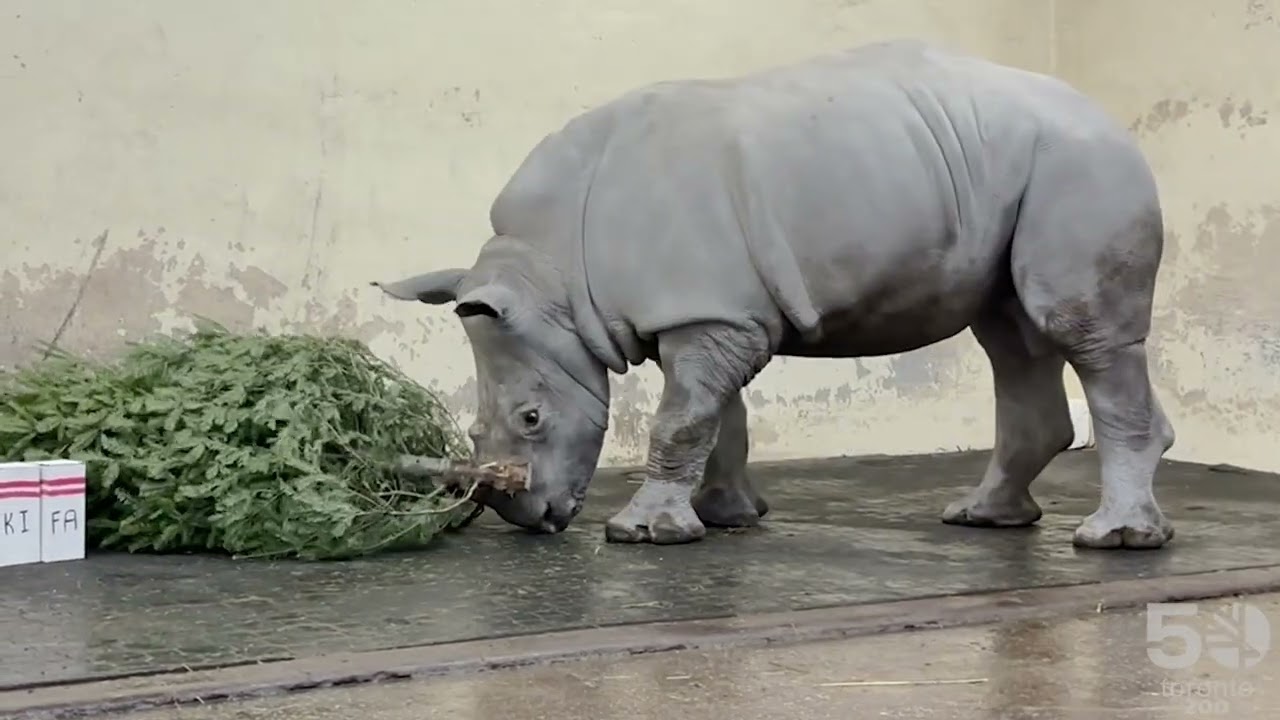- Introduction to Kifaru and his momentous first Christmas and birthday as a symbol of successful wildlife conservation.
- Insights into rhino care in zoo environments, focusing on nutritional and health requirements.
- The crucial role of enrichment programs and environmental adaptations in maintaining rhino well-being in captivity.
- The impact of Kifaru’s birth and celebrations on public engagement and awareness in wildlife conservation efforts.
- Future perspectives on rhino conservation, emphasizing collaboration among zoos, conservationists, and local communities.
The first Christmas and birthday of Kifaru, a young rhino, represents a monumental milestone not just for the animal but for wildlife conservation. Kifaru, whose name aptly means “rhino” in Swahili, is part of a conservation project aimed at ensuring the survival of this remarkable species. With his birth, conservationists have added a hopeful chapter to the ongoing battle against the extinction of rhinos. This event provides an excellent opportunity to delve into the nuances of zoo management, rhino care, and the vital importance of public participation in conservation.
Managing the care of a young rhino like Kifaru in a zoo environment requires a careful balance of scientific knowledge and practical experience. Rhinos, being massive herbivores, have specific dietary requirements that must be met to ensure proper growth and health. A young rhino’s diet in captivity must closely resemble what they would consume in the wild, including a variety of grasses, hay, and specialized food pellets that provide essential nutrients such as calcium and phosphorus. The role of zookeepers is crucial here, as they must monitor the animal’s food consumption and health indicators, adjusting the diet as needed.
Beyond nutrition, physical health is a top priority. Routine veterinary checkups, vaccinations, and preventive care are critical to maintaining the health of a young rhino. Zoos typically have dedicated veterinary teams to address potential health concerns quickly. Continuous monitoring of any signs of illness or injury, along with providing therapeutic care as needed, is an indispensable aspect of zoo management for rhinos.
Equally important is creating an environment that stimulates physical and mental activity. Enrichment programs are integral to this, aiming to mimic the challenges and stimuli rhinos would encounter in the wild. Large, open spaces for roaming, mud wallows, and pools for bathing provide physical activity and natural behavior engagement. Interactive enrichment activities, such as scent trails or hidden food, encourage mental stimulation and problem-solving capability. These activities are crucial, as they improve the well-being of animals like Kifaru and contribute to a more natural lifestyle even in captive settings.
The celebrations for Kifaru’s first Christmas and birthday have garnered significant attention, highlighting the power of such events to inspire and educate the public. By sharing the joy of these milestones, zoos can enhance public connection to wildlife conservation struggles. Visitors gain a deeper understanding of rhinos’ plight, prompting increased interest in conservation efforts. Through educational programs, live demonstrations, and interactive exhibits featuring Kifaru, zoos can effectively spread awareness about the threats rhinos face in the wild.
Through public engagement, zoos can establish themselves as proactive leaders in conservation missions. By connecting people with animals through events like Kifaru’s birthday, there emerges a platform to disseminate critical conservation messages, drive fundraising for initiatives, and stimulate community involvement. This involvement can significantly boost conservation efforts, aiding in habitat restoration projects, anti-poaching measures, and captive breeding programs.
Looking ahead, Kifaru’s presence signifies hope for the future of rhino conservation efforts. As he grows, his role can transcend that of a zoo inhabitant to become an ambassador for his species. Partnerships among zoos, conservationists, and local communities are increasingly critical. These collaborations pave the way for more comprehensive conservation strategies aimed at securing wild habitats, enforcing protective legislation, and promoting sustainable community development to reduce reliance on wildlife resources.
In this context, zoos play an important role. They act as genetic reservoirs for species losing their habitats to human activity, climate change, and illegal poaching. By maintaining genetically diverse populations under human care, they provide a contingency plan for species recovery in the wild. The birth and life of rhinos like Kifaru serve as a stark reminder that the survival of threatened species relies heavily on global cooperation.
Ultimately, Kifaru’s first Christmas and birthday symbolize the tenacity of conservation efforts and the critical role zoological institutions play in safeguarding our planet’s biodiversity. By continuing to engage with the public and supporting rigorous scientific research and conservation programs, we can aspire to a future where species like the rhino thrive once more in their natural habitats.
*****
Source Description
White rhino male Kifaru celebrated his first Christmas (and birthday) at your Toronto Zoo this year.
He was able to enjoy some extra enrichment (and scratches) from his Wildlife Care team.
A reminder to guests visiting the Zoo that the White rhinos are behind-the-scenes enjoying the comforts of their winter home. They are not viewable.


